Automation of financial processes, supported by a team of dedicated experts, is very crucial for ensuring precision in accounting and global optimizing business operations. The deferred revenue accounting is the one of some critical components of financial management for businesses that receive prepayments for goods or services. By an understanding how to record deferred revenue, when to recognize deferred revenue, and manage deferred revenue account, we guarantee compliance with accounting standards. This helps to make sure that the financial statements of companies are reliable.
The definition of deferred revenue includes revenues, that an entity receives in advance for goods or services that will be delivered or performed in the incoming. Accordingly, such an income is recorded as a liability until the factual revenue is earned. Properly managing deferred expense Odoo, enterprises easy can avoid financial misstatements, non-compliance with accounting standards, revenue recognition errors, and inefficient manual bookkeeping. So, is deferred revenue a temporary account? Errors in deferred Odoo can lead to serious financial misstatements, compliance issues, and even audit risks. It is essential to understand the timing and classification of deferred revenue to mitigate these risks.
In this guide we will provide examples of deferred revenue journal entries and show what happens with these finances and how does it affect our financial statements. We will also show the best practices that will help businesses effectively manage.
What type of account is Deferred Revenue: Simple in Automating with Odoo 18
Deferred revenue is money received by a venture for goods or services that have not yet been provided to a customer. And as, is a financial liability to the customer, not profit, since the venture has yet to provide the service. Odoo revenue is packed with incredible tools for managing is deferred revenue an asset, and yet for those who like to keep up with the trends, there are some incredible options for automating and modifying processes that can take our accounting to the next level, ensuring accuracy and efficiency.
Creating Custom Revenue Recognition Rules
Standard system settings allow us to recognize deferred revenue over fixed intervals, but some businesses may require more specific rules for deferred income recognition. For instance, if our venture works on projects where income is recognized in stages, we can create custom rules to recognize revenue based on milestones or the percentage of project completion. This assures that our accounting entries, such as journal entry for deferred revenue, always align with the actual status of the project.
Integration With Other Modules
Integrating deferred revenue management with other Odoo modules, such as Sales, Invoicing, and Projects, ensures that our deferred revenue accounting software are always up to date. For example, in the Sales module, we can automatically generate invoices that include deferred accounting, and any changes to the order status will be reflected in our accounting. So, when we integrate it with the Projects module, ensuring that deferred revenue Odoo is adjusted as the project progresses.
Handling Complex Scenarios
Deferred revenues Odoo can get complicated with situations like partial payments, multi-currency transactions, or long-term contracts. System offers automatic adjustments for these complexities. For instance, when clients make partial payments, system will allocate deferred net revenue accurately. Similarly, multi-currency transactions will be adjusted based on the latest exchange rates, making sure everything is accurately recorded in our deferred revenue journal.
Using Modern Reporting Tools
To maintain constant oversight of deferred revenue, it's important to leverage built-in reporting tools. These tools are our key to keeping track of current figures and making informed predictions about income streams. System offers a variety of reports that provide detailed insights into the status of accounts, deferred income journal entry amounts, and the timing of revenue recognition. With these incredible tools, businesses can make sure that all deferred revenue processes are completed correctly and on time.
The Benefits of Automation
Automating deferred revenue recognition helps eliminate errors related to manual data entry and significantly reduces the time required to process information. All calculations are made based on pre-set parameters, which minimizes the risk of errors in revenue recognition. The expected changes in financial reports are applied automatically, with data being updated in real-time. Simple automation ensures that Odoo revenue deferred is consistently managed according to accounting standards and helps streamline financial operations, reducing the administrative burden on our accounting team.
Modern Newest Functions of Deferred Revenue Accounting Example
Any changes to sales orders, project planning's or invoicing are automatically reflected in the deferred revenue journal entries, provision that financial records remain consistent and up to date. In addition, integration with other system modules, makes managing Odoo revenue even more seamless. System advanced reporting capabilities provide businesses with real-time information on the status of deferred revenue, enabling better forecasting and decision-making. Tracking deferred revenue asset over several periods and taking into account various factors, such as multi-currency transactions or partial payments.
- System will optimize accounting for deferred revenue, seamless management and reducing the risk of errors or reporting delays.
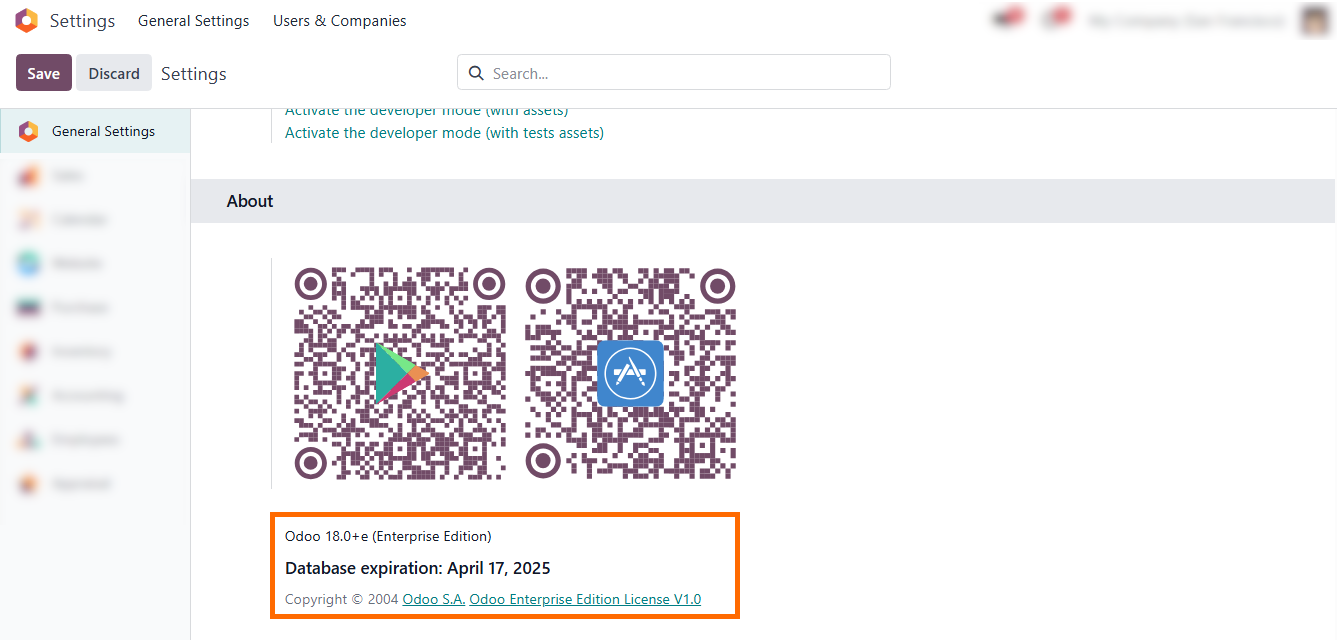
How Simple to Create Deferred Expense Odoo
To set up the Odoo turnover, at first, we need to install the «Deferred Revenue» module in the accounting app. Without this step, we would have to manually track future periods revenues, which increases the risk of accounting errors and compliance issues. This manual tracking would also require significant resources and time, leading to inefficiencies. Creating the invoice will allow us to formalize the in Odoo accounting documentation. The new features allow users to set their own revenue recognition rules based on specific business requirements, such as project milestones, service periods or subscription terms.
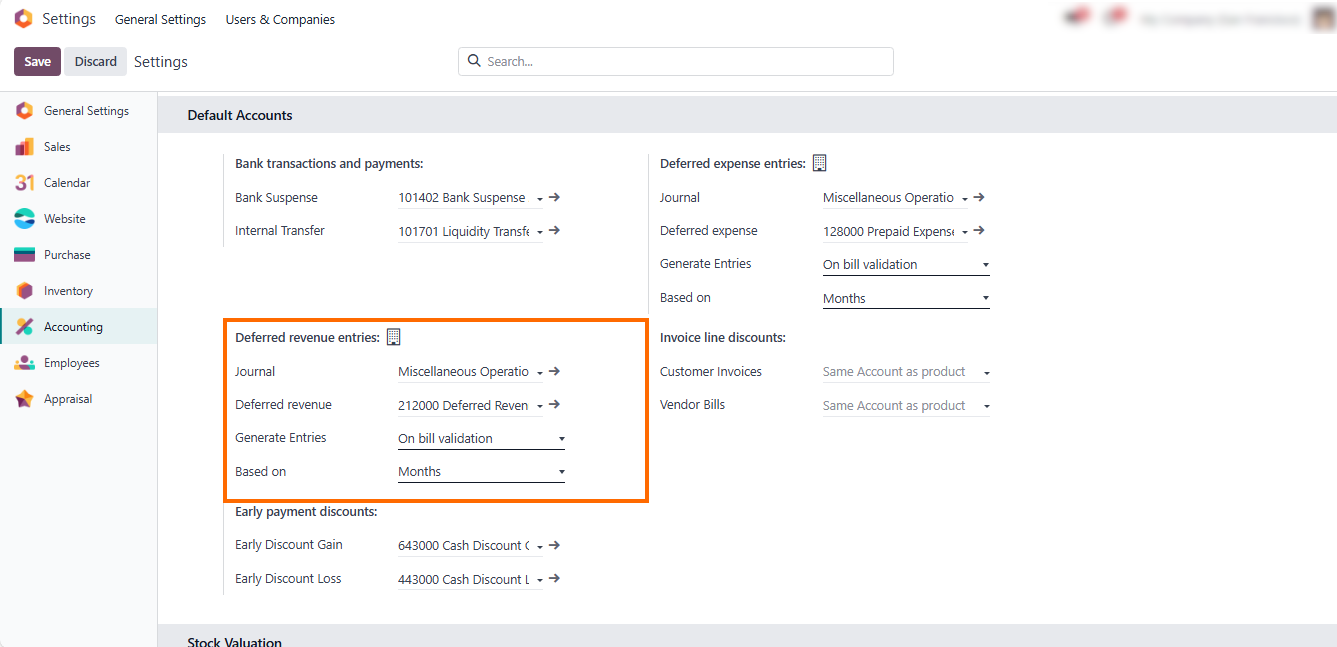
Go to the Configuration menu and find the Deferred revenue entries field.
- In Odoo deferred revenues, the accounting deferred income function is easy customizable to suit our specific needs. We can choose the «Generate Entries Odoo» option and use the deferred revenue journal entry example to set it up according to our requirements.
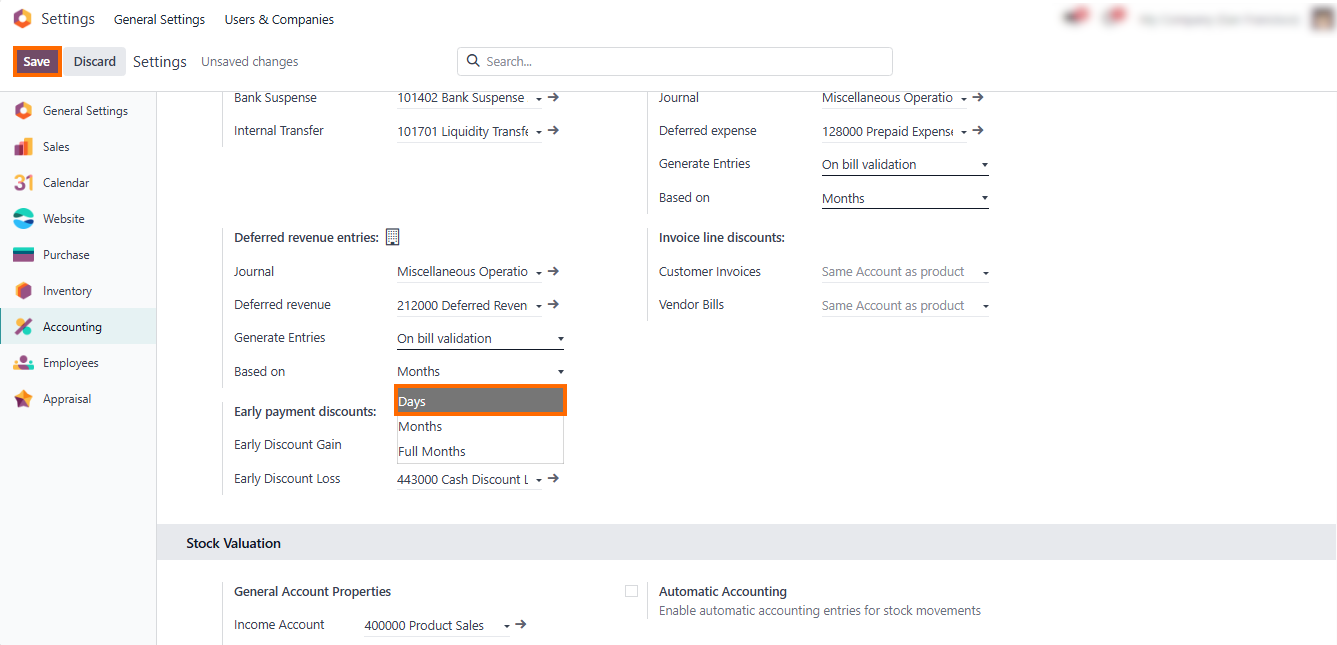
Deferred Revenue Write Down and Quickly Set Up
The system provides an intuitive and user-friendly interface for these actions. In the context of Odoo deferred revenues, it is important to correctly classify revenue that has been billed but not yet earned. This ensures that financial statements accurately reflect the company's true income. Odoo prepaid revenue share functions allow us to manage with special journal entries that are consistent with revenue recognition over time, helping businesses to comply with accounting standards. With following these simple steps, we can effectively manage accounting deferred revenue in system.
- Maintain accurate financial record deferred revenue and comply with accounting principles by selecting the correct account type, applying tags and choosing the right deferred revenue meaning and journal entry.
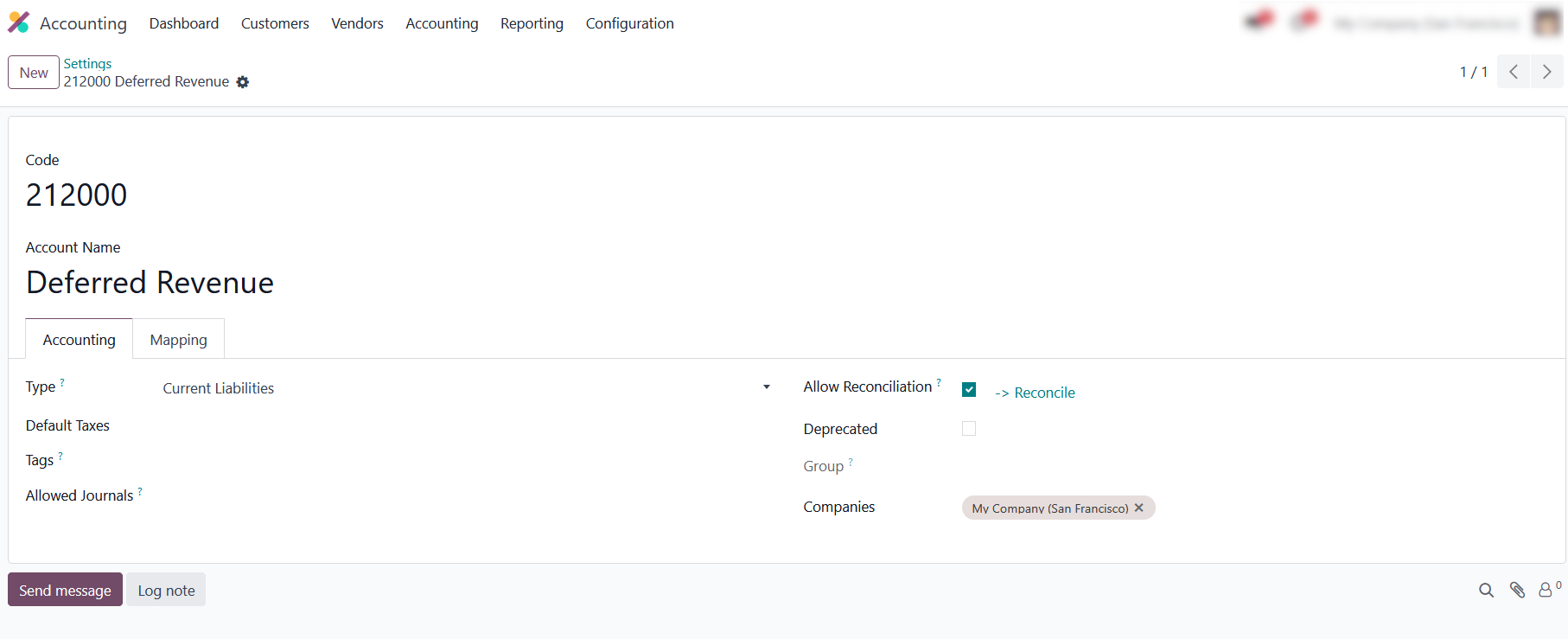
Example of Applying of Revenue Deferral
The function treatment of deferred income as the portion of revenue that is received but not yet earned, and it ensures that revenue is recognized only when the related goods or services have been delivered. So, prepaid revenue share functions allow you to manage deferred revenue with special journal entries that are consistent with revenue recognition over time, helping businesses to comply with accounting standards of Odoo revenue.
- As practical of defer revenue example we take a «Subscription for online courses», as shown by orange.

The product costs $59 per month, which adds up to a
total of $708 for the entire year. Now, we can schematize this scenario in the
context of deferred
Odoo feature to better understand how this accounting process is managed.

With functionality for deferred revenue at account, we can see how
to account for deferred revenue records is done in practice and
how to effectively manage this type of revenue while ensuring the accuracy of
our financial statements.
Accounting Entries for Deferred Revenue
Now that we have completed the general setup, we can move on to the next step. To continue with our practical deferred revenue example, we need to create an invoice for the customers payment. This process involves generating a document that reflects the payment amount, payment terms, and a detailed list of the goods or services provided to the customer. Accordingly, the issue of deferred revenue and expenses is important for proper bookkeeping and requires proper management within double entry for deferred revenu and other similar accounting procedures.
To starting for deferred revenue calculation, at first, click at Customers tab and select «Invoices», as by orange.

- In a new
window, the system will display previously created invoices, we need to
click on «New» to
create a new one.
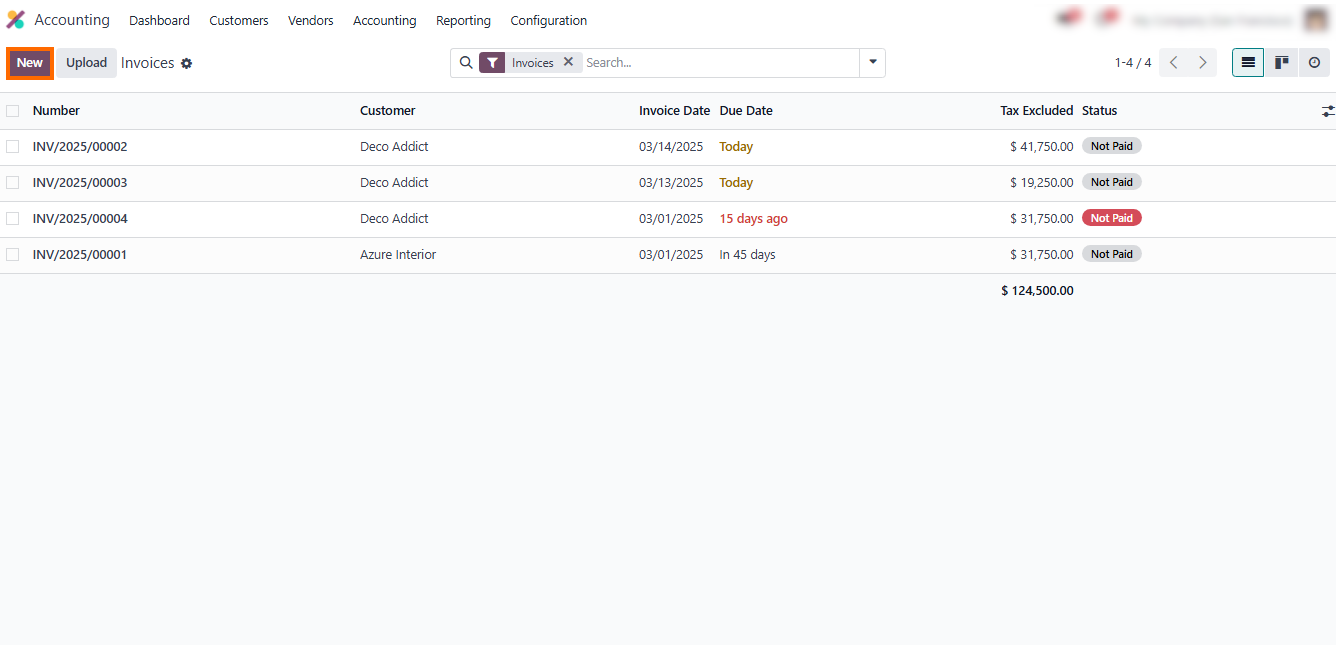
- Previously, we select the one year subscription to online courses as an examples of deferred income, as by orange.
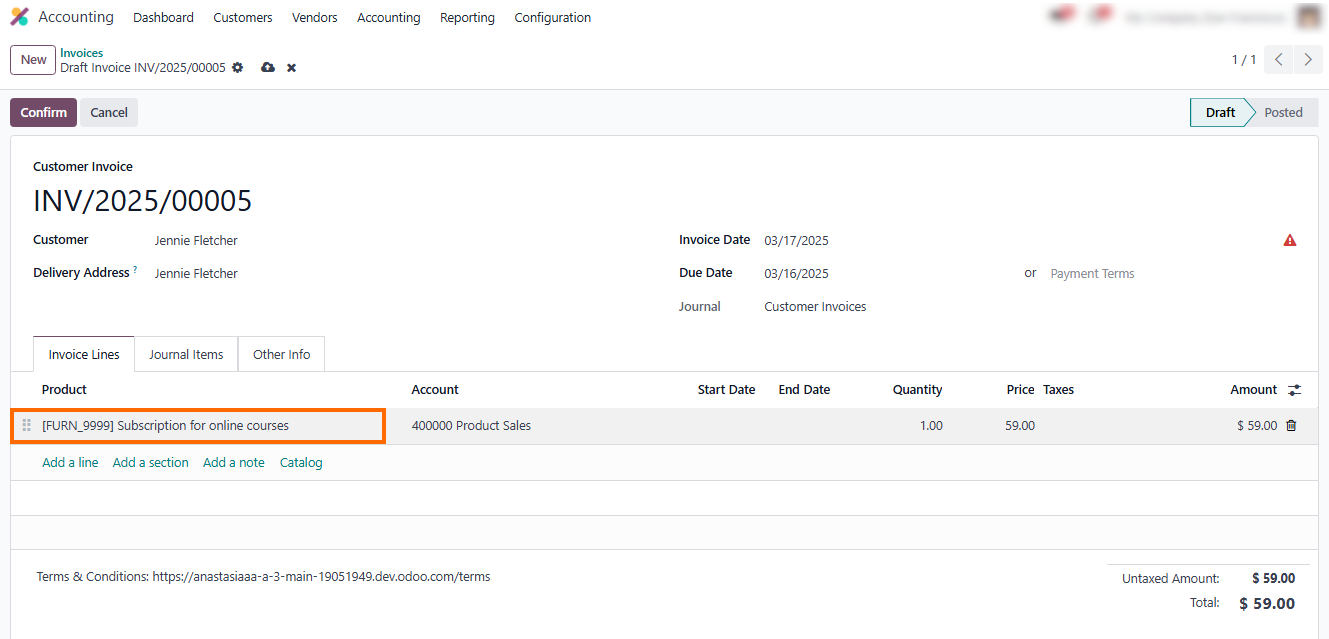
Keep attention to the fields: «Start Date» and «End Date», these fields are required to deferred expense. Check that all the data is correct and click the «Confirm».
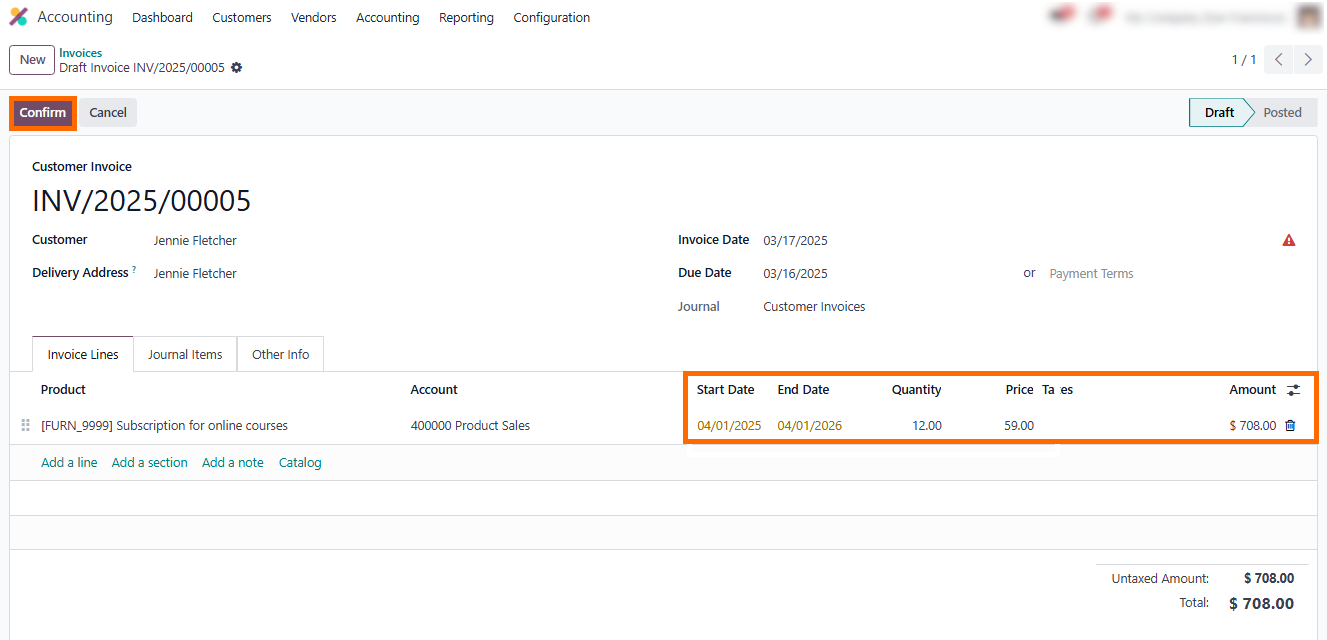
Deferred Revenue Analysis ans Using the Example of Deferred Revenue
After confirming the operation, the system automatically creates Deferred liabilities journal entries, which ensures accuracy in accounting and allows for the correct accounting of obligations to be fulfilled at a later stage. Deferred revenue purchase accounting provides for the recognition of revenue not immediately upon receipt of payment but on the basis of obligations or provision of goods services in the future. This helps to avoid errors in financial accounting and ensures compliance with reporting standards.
Click on the «Deferred Entries» tab to go to a new window, as by orange.
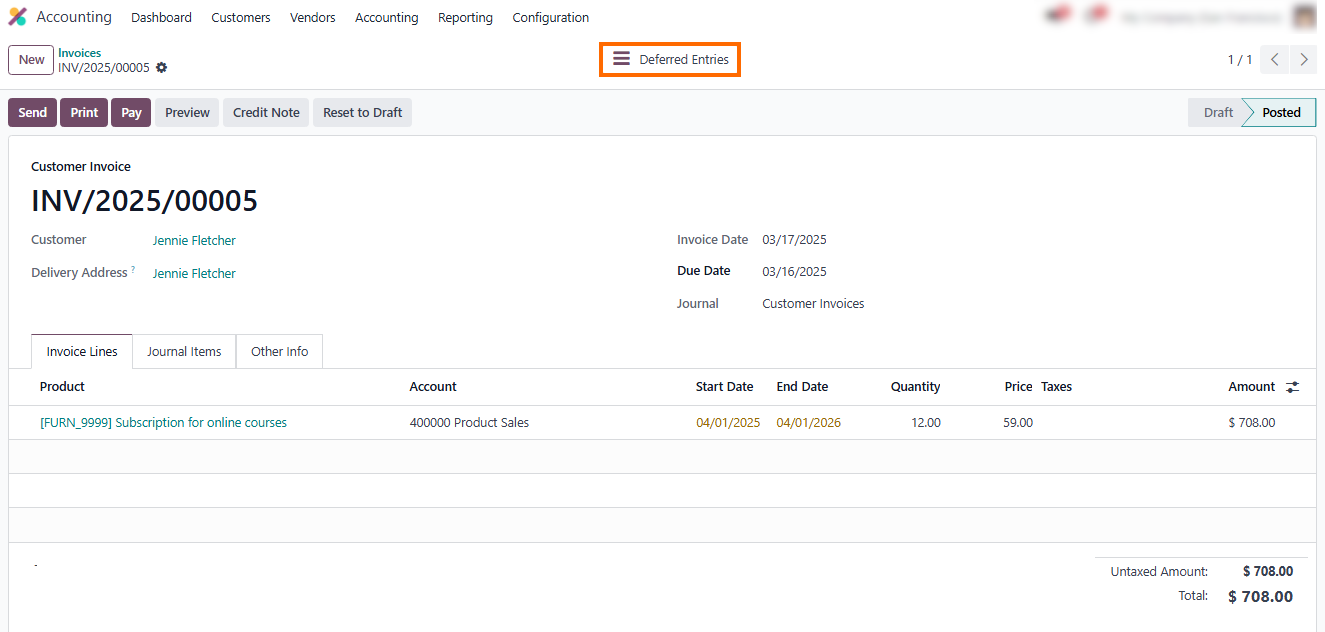
- Now,
please notice how the system has changed the meaning
of deferred revenue
according
to the number of days in the month.
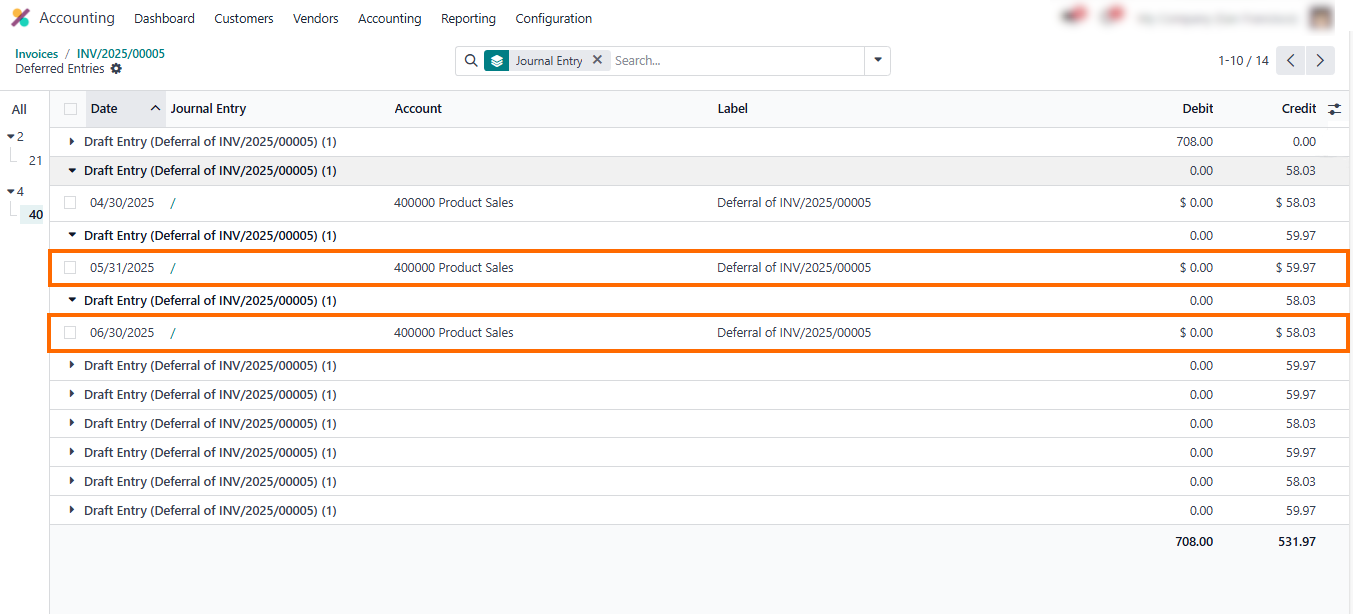
-
If we
return to the baseline settings, we can also select accounting entry for deferred revenue based on month, as shown
in orange, which helps in aligning revenue, as shown by orange.

- Now, notice that deferred income account is in no way tied to the number of days in a month, unlike the previous case, ensuring that revenue is distributed evenly across periods regardless of the length of the month, as by orange.
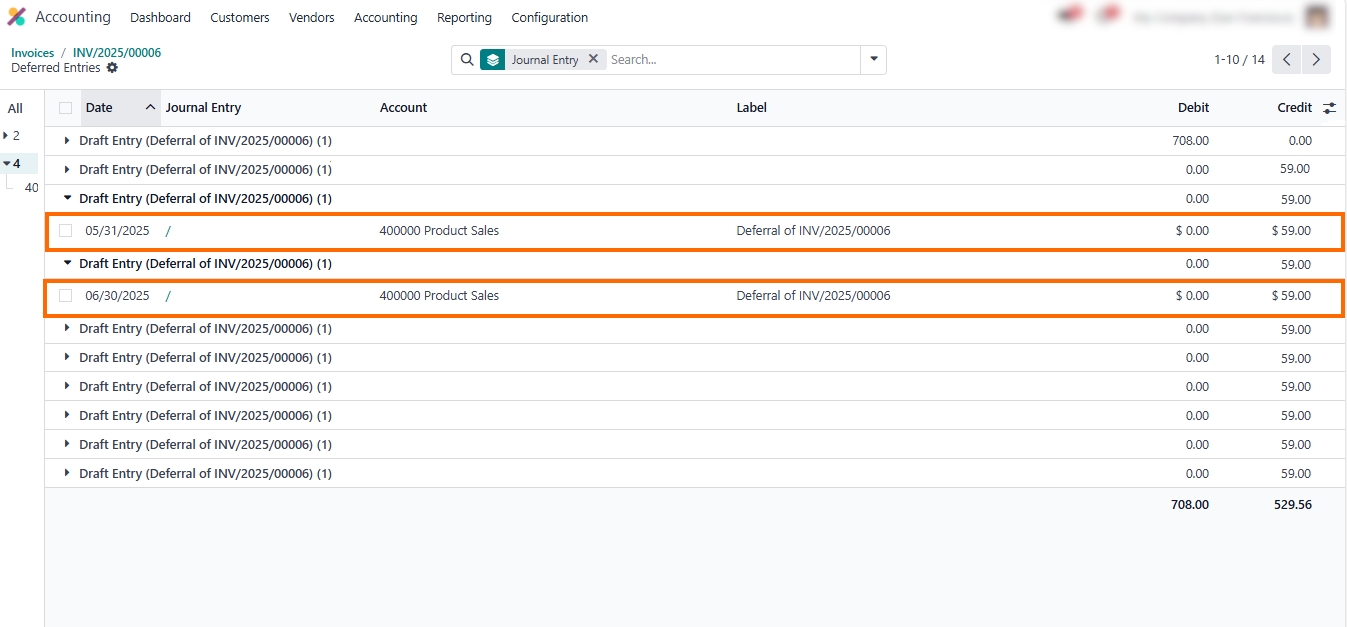
- Deferred revenue double entry, when a venture receives payment in advance for goods or services to be provided in the future, it records the initial transaction by debiting cash and crediting deferred revenue.
Reporting With Deep Understanding How is Deferred Revenue Recorded
When it goes about accounting for deferred revenue accounting policy, accurate reporting is essential to ensure compliance with deferred revenue accounting standard and to make informed decisions based on financial data. Odoo reporting tools are designed to provide a detailed view of how revenue recognition deferred revenue, recognized and adjusted over time. Understanding how deferred revenue is a recorded in system reports allows companies to maintain accurate financial statements and ensure that their booking deferred revenue are properly tracked.
- Click at Reporting tab and select a «Deferred Revenue», as shown by orange. In the new window, the system will display a comprehensive report detailing the amount of deferred fee income, how it is recognized over time.

- This report helps businesses track the status of their deferred revenue accounts, see when income is being recognized, and maintain transparency in their financial reporting.
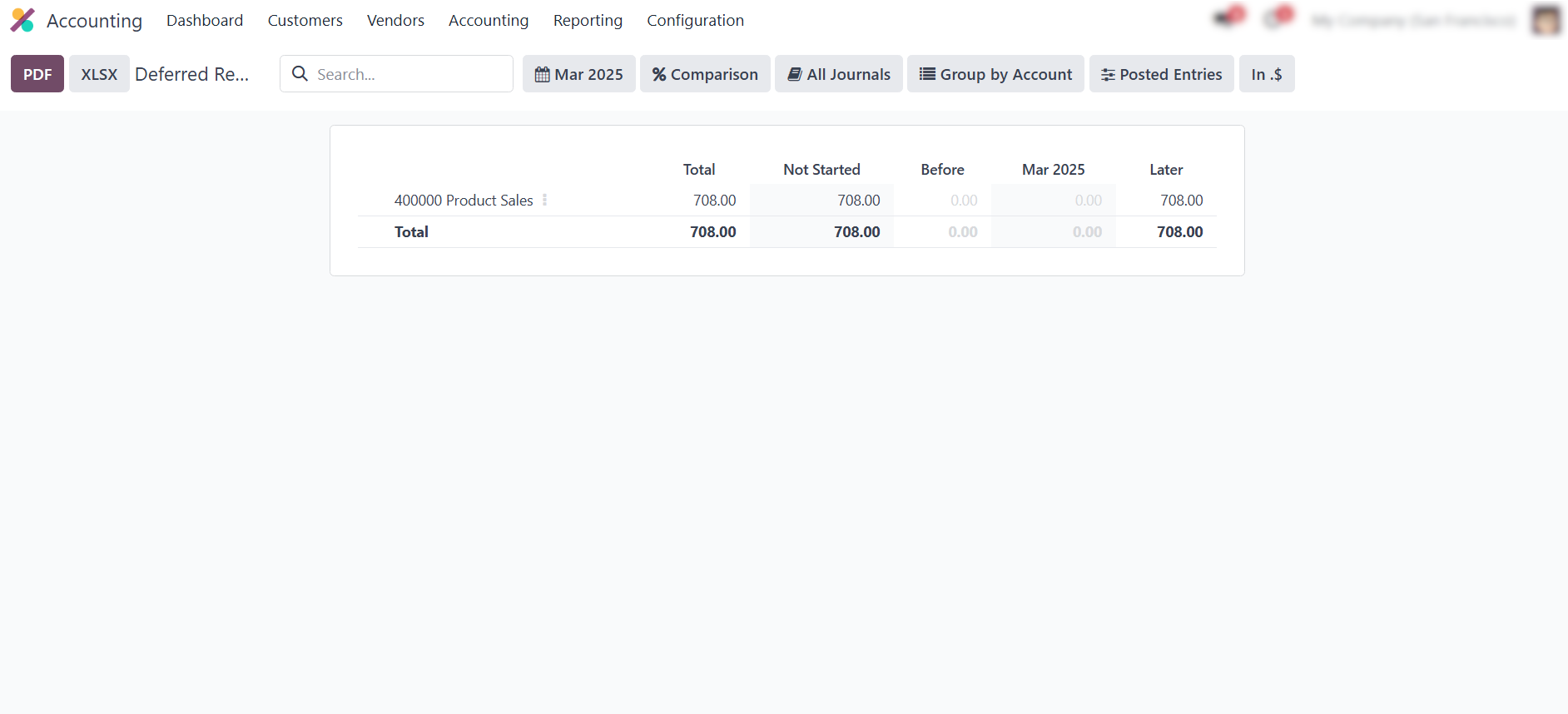
- Now we can choose between deferred revenue Excel template and PDF format to download the report, depending on our deferred revenue method of analysis or sharing. By reviewing these reports, companies can maintain accurate financial statements and make informed decisions.
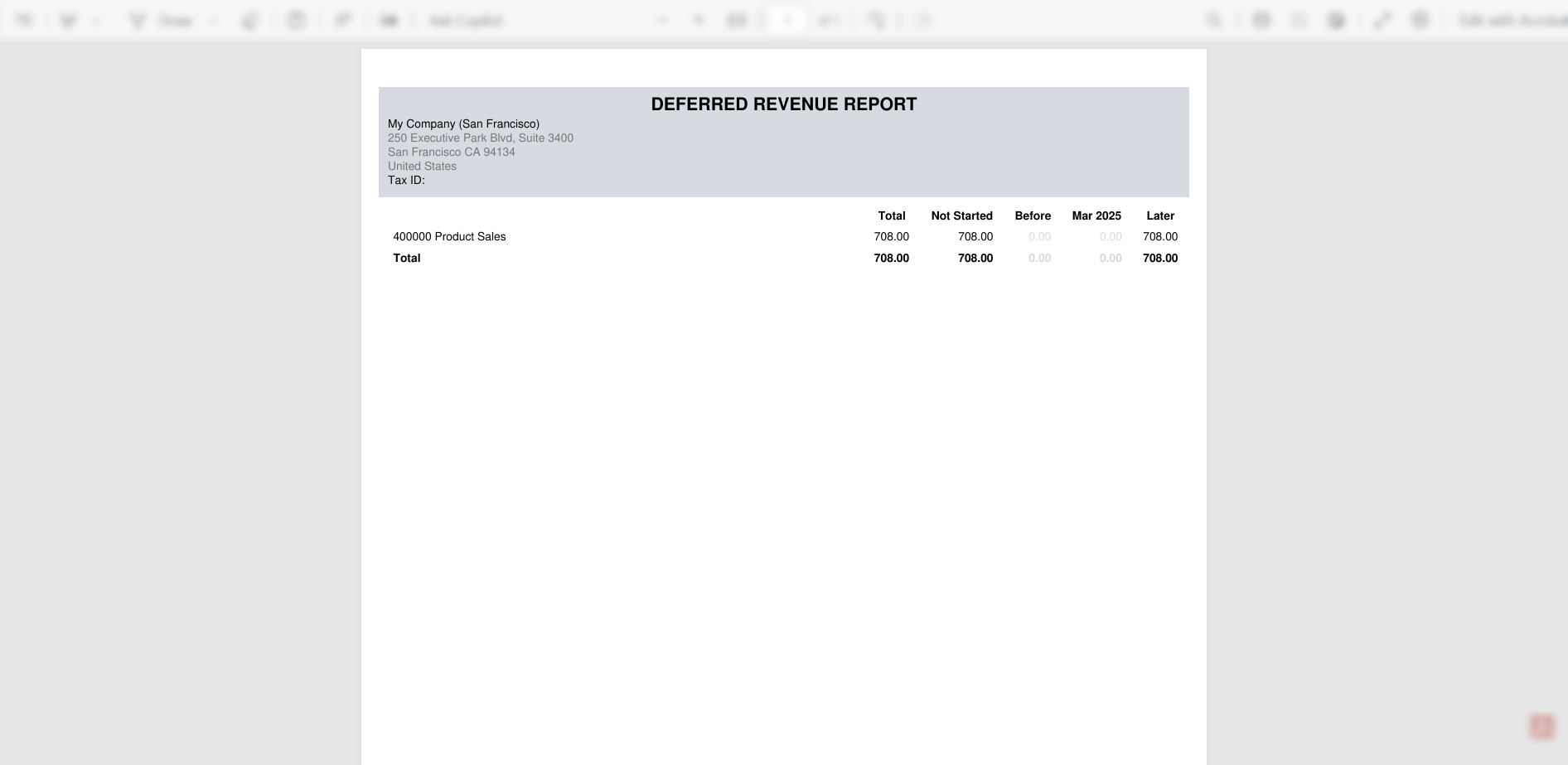
- Odoo’s reporting tools allow businesses to track how deferred revenue meaning recognized and adjusted over time. The option to export reports in Excel or PDF formats provides flexibility for analysis and sharing, supporting overall financial clarity.
Common Mistakes in Automating Deferred Revenue Recognition Journal Entry
System functionality can offer powerful tools for automated management of Odoo deferred revenues, there are some common mistakes that can occur when setting up the system. By identifying and correcting these common mistakes, we will be able to make the most of the automation in the system, ensuring accurate and compliant deferred revenue recognition.
Ignoring Configuration Opportunities
Sometimes users rely on standard settings without customizing Odoo to their specific business needs. If the system allows for automatic deferred revenue accounting entries, but companies that operate on a project plannings basis or have special agreements with clients may require custom recognition of deferred revenue rules. Failure to leverage these options can lead to discrepancies between financial reports and the actual business situation.
Data Entry Errors
It is crucial to enter data carefully when creating invoices or selecting products/services. For instance, correctly specifying deferred revenue asset or liability, start and end dates, and the service period significantly impacts the accuracy of recording deferred revenue. If these details are incorrect or missing, financial reports may contain errors.
Failure to Integrate with Other Modules
If deferred revenue management is not integrated with Odoo’s Sales, Invoicing, or Projects modules, data may become incomplete or outdated. Proper integration ensures automatic updates to journal entry to record deferred revenue when the sales or project status changes, maintaining financial record accuracy.
Overlooking Complex Scenarios
Some businesses deal with partial payments, multi-currency transactions, or long-term contracts. Ignoring these factors can disrupt the deferral of unearned revenue process. Odoo can automatically account for such cases, but it is essential to review configurations periodically to ensure accuracy.
Underestimating the Importance of Regular Report Reviews
While Odoo generates automated reports, financial teams must periodically review them to ensure that all deferred revenue reconciliation records align with the actual financial position. Without regular checks, errors may go unnoticed and accumulate over time.
Ensuring Accuracy in Deferred Revenue Accounting
To ensure proper deferred revenue accounting, businesses should regularly review journal entry for deferred revenue, verify deferred revenue adjustment, and apply the correct deferred revenue accounting treatment. This helps prevent potential errors and ensures financial clarity.
What is Deferral in Accounting and Balance Analysis
A new enhancement in the Odoo Accounting module is the Balance Sheet icon, which makes it even easy to track and manage our financial records, especially when dealing with deferred revenue or other liabilities. Now appears on the Deferred Revenue account and in other related financial modules. It provides an instant view of the current balance, allowing users to quickly see how much deferred revenue still unrecognized and how much has already been recognized. Deferred revenue and expenses is important for proper bookkeeping and requires proper management within deferred revenue expenditure entry and other similar accounting procedures.
- We can easily access a summary of all our deferred revenues and instantly view the outstanding amounts that need to be recognized. Click on it to explore the details.
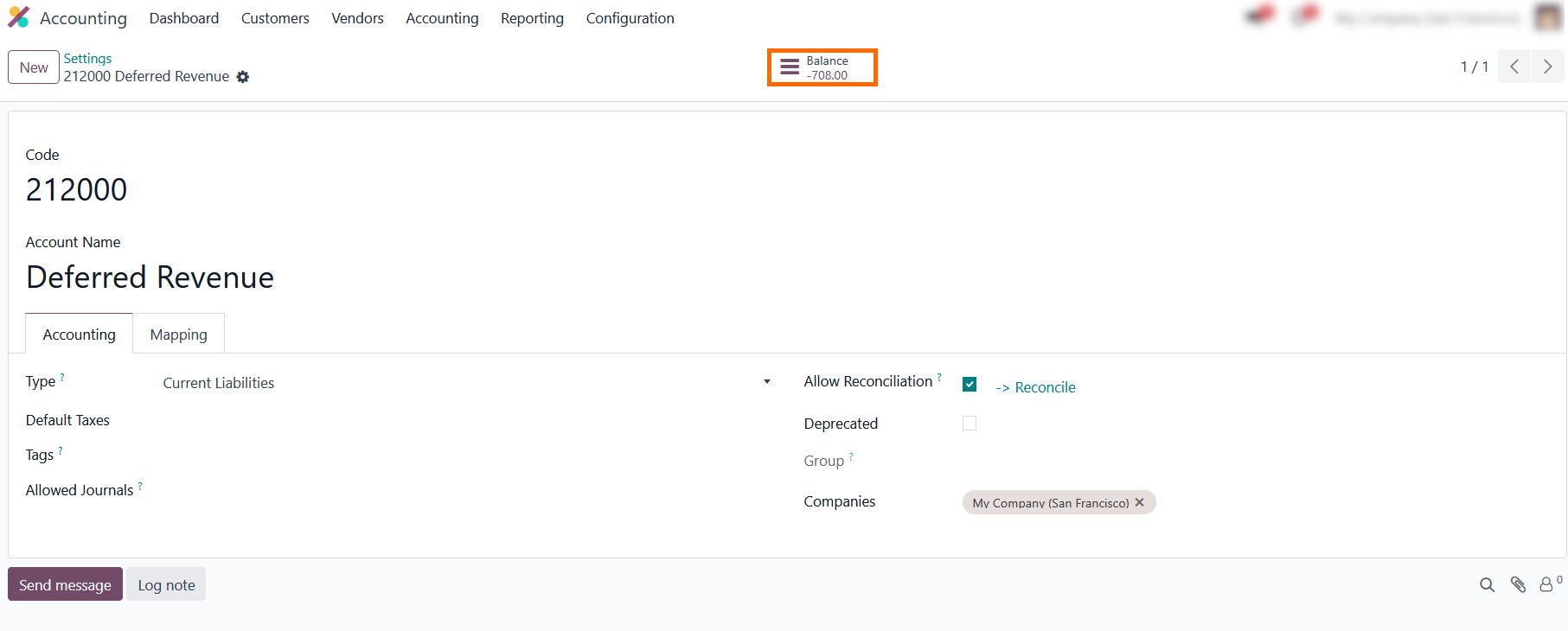
- So, this process is automated, making it easier to manage long-term subscriptions and ensure accurate financial reporting. What is the journal entry for deferred revenue?
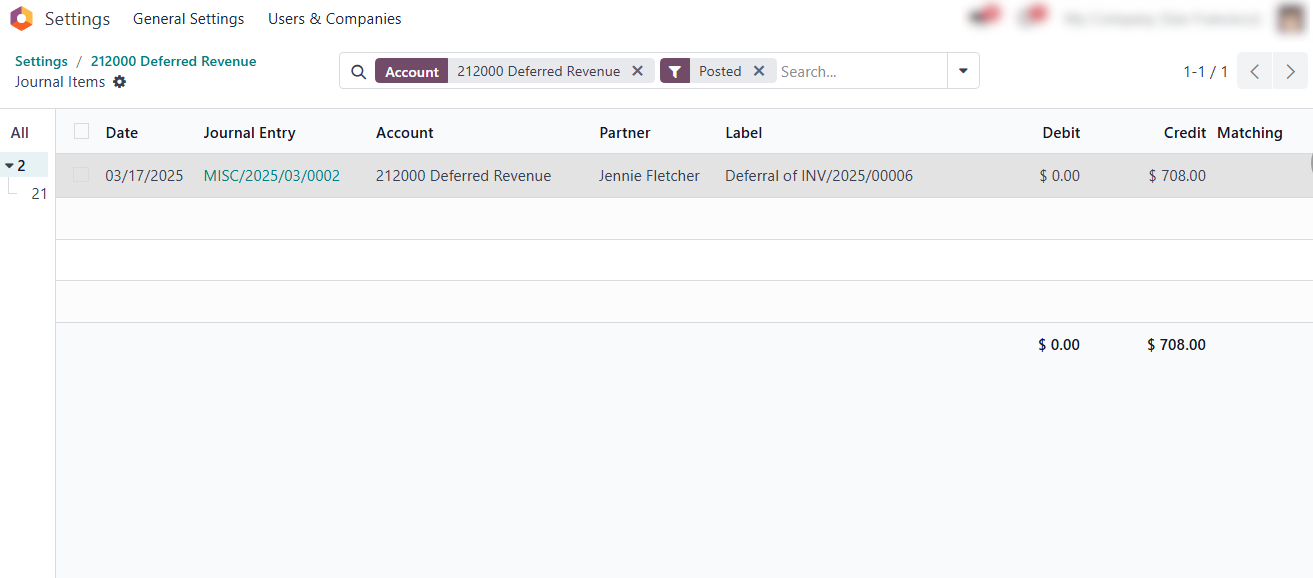
- A write off deferred revenue exists, when an entity reduces the amount of revenue previously recognized as deferred inventory method, usually owing to changes in contracts with customers, cancellations or adjustments to the amount of goods or services.
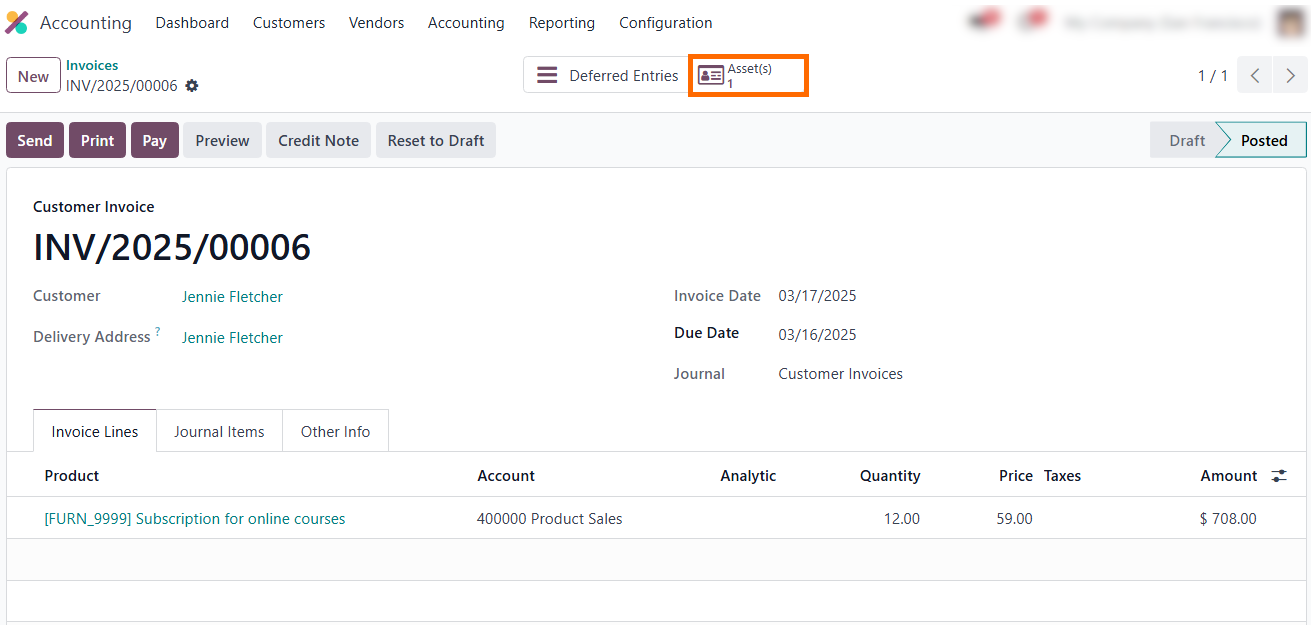
Integration Deferred Revenue Accounting Entry With Other Modules
The «Projects» module can give us robust planning and task tracking capabilities. It allows seamless integration with financial modules to efficiently manage deferred income accounting treatment. Users can record deferred revenue example journal entries or recognize deferred revenue accounting software over time, and ensure accurate financial reporting. By integrating with other modules, the system enables the automation of workflows and streamlines data management. When handling incoming under the deferred revenue cash basis accounting method, the system automatically creates double entries to reflect the liability.
This ensures compliance with deferred revenue recognition tax rules and simplifies purchase accounting processes.
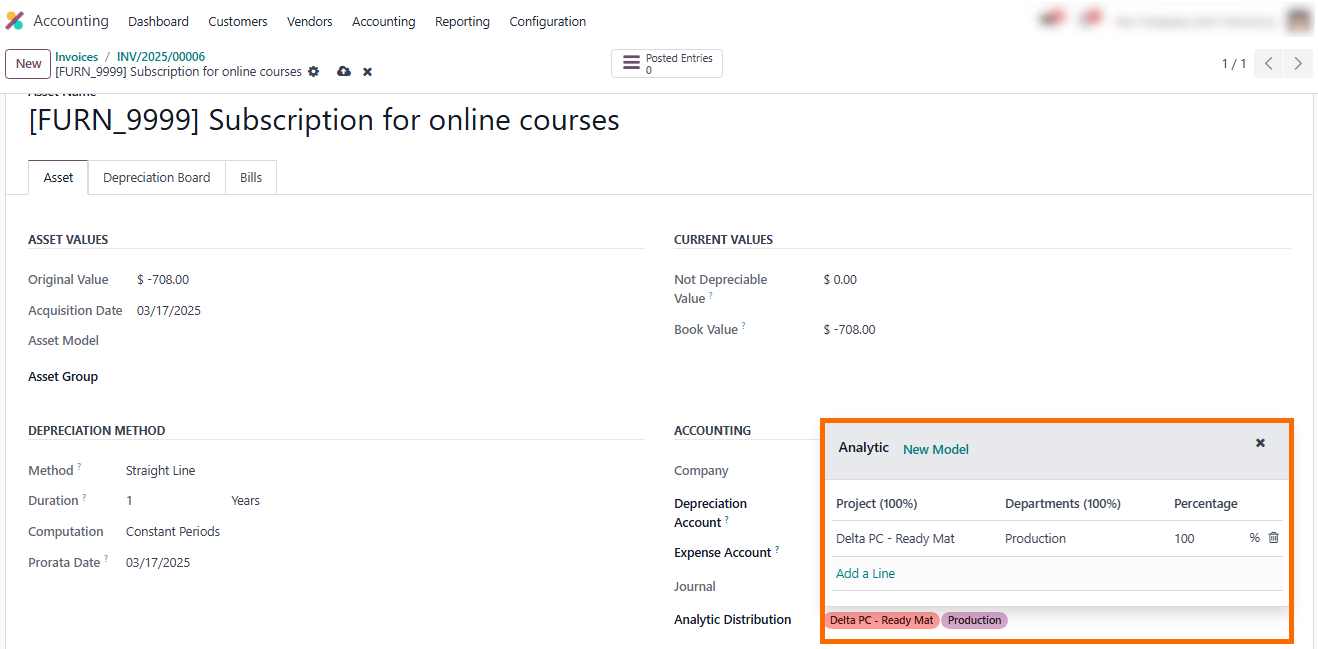
- When handling deferred revenue asset acquisition, the system properly records the deferred income as a liability using deferred income double entry accounting until the revenue is recognized, ensuring compliance with accounting standards. This reduces manual intervention, minimizes errors and enhances overall accuracy.
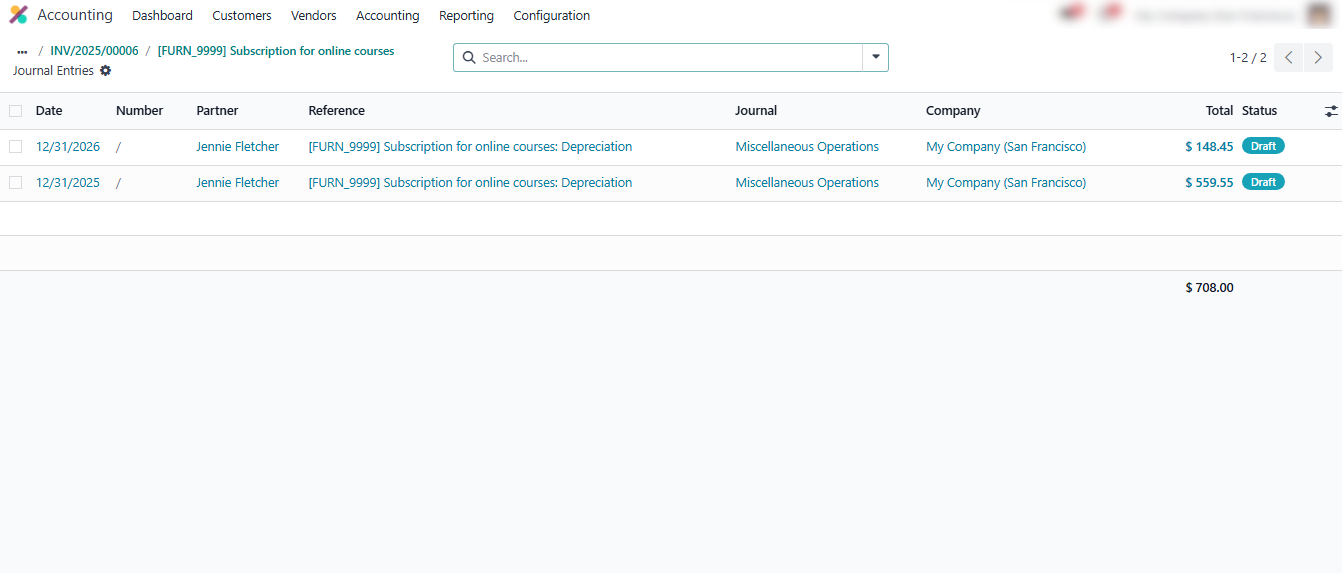
Conclusion
According our guide deferred revenue unearned revenue guide, is revenue that arises when an entity receives payment for goods or services but does not deliver them immediately. This helps recognize revenue in the correct accounting period. It is deferred revenue a temporary account, that requires the deferred method of accounting. One example is the journal entry for deferred revenue, which is recorded when payment is received in advance, and later recognized as revenue once the obligations are fulfilled.
What is a deferred revenue account? Is used for accurate accounting, especially in cases like deferred rent revenue journal entry or deferred revenue income journal entry. Modern usability software, such as Xero deferred revenue and Odoo, offers automation of these processes, particularly through revenue entries and other relevant journal entries. This automation improves efficiency and accuracy in managing deferred revenue accounts.
It is crucial to understand the difference between deferred cost of goods sold journal entry and deferred gain journal entry, as proper accounting of these entries ensures financial statement accuracy. In the context of deferred expenses, such as deferred gross profit journal entry, accounting must be precise to avoid financial inaccuracies. By maintaining a well-organized deferred revenue system, businesses can ensure they remain compliant with accounting standards and financial regulations.
With Odoo 18's smart features, you can confidently manage your deferred revenue meaning and journal entry, optimize financial operations and ultimately gain peace of mind knowing that your financial statements are accurate and compliant with accounting standards.